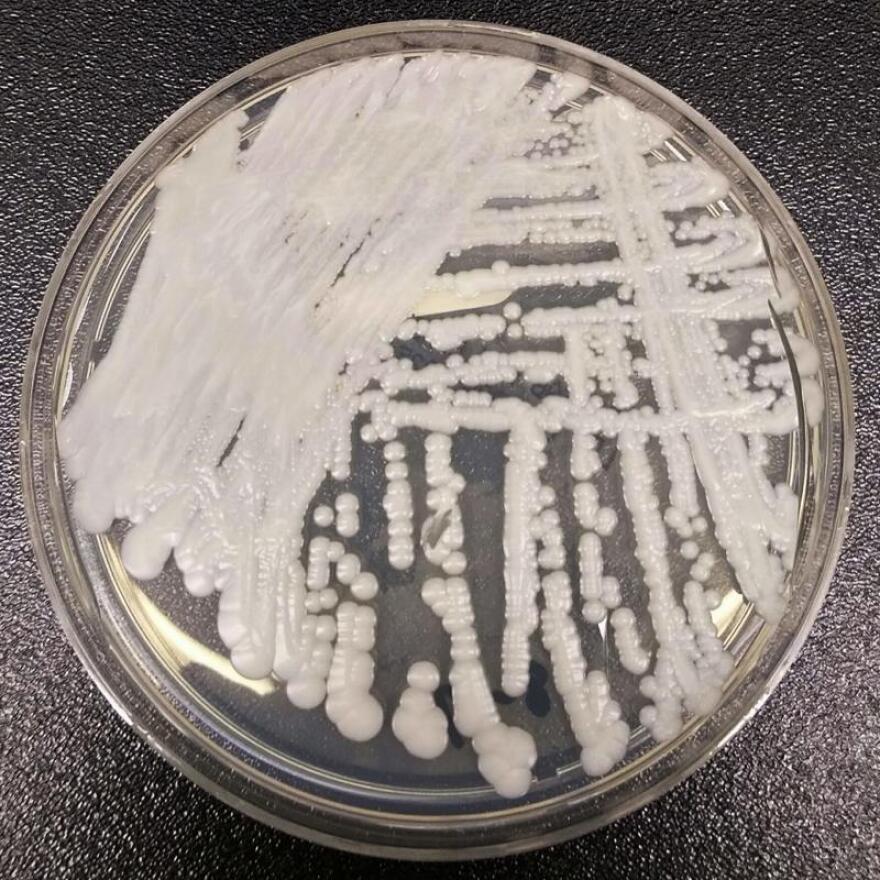However, Dr. Trish Perl, chief of the infectious diseases division at UT Southwestern Medical Center, told KERA's Sam Baker Candida auris is not a major concern for the general public.
INTERVIEW HIGHLIGHTS:
What Is Candida auris?
Candida auris is a fungus — a sub-species, if you will, of Candida. Actually, Candida is one of the most common fungi that we see that causes human disease. For example, Candida is the cause of diaper rash. It causes vaginitis. It causes toe infections.
What Makes It Drug-Resistant
Organisms are very smart and they have abilities to block antibiotics. In this case, it's anti-fungi. They have enzymes. They may actually have other mechanisms where they prevent one of the treatments that we want to use from being effective.
The other key thing about resistance is that sometimes it's actually innate and part of the organism's DNA. Sometimes it's actually acquired. The more and more you're exposed to certain drugs, the more likely it is and the smarter the organism will become. And it'll prevent some of those treatments from being effective.
How is Candida auris transmitted?
One way we think it is spread is through the environment. It's really what we call a contact transmission, but a lot of hand-to-hand to environment, to hand transmission.
Difficult To Eliminate
It requires, I would almost say, Herculean effort if you will, in terms of cleaning and paying attention to detail with all of the protocols that are put in place, whether you're talking about a home environment or a healthcare environment.
Who's Most At Risk?
A lot of different individuals. People who've been very sick in hospitals. It's the kind of infection we tend to see. And people who've been in intensive care units. We've also seen it a lot in long-term care facilities. These are people who commonly have been exposed to a lot of medical care.
It’s Hard To Identify In The Lab
Some of our automated systems do not pick it up. So if you don't suspect it, you could miss it. And that's another reason that it's emerged as a very concerning pathogen.
Candida auris And COVID-19
We have seen several outbreaks that make us wonder if some of the epidemiology is changing a little bit in patients post-COVID. And so this does seem to be a pathogen that may actually cause secondary infections in some of those critically ill patients.
Also…
A problem we think is happening is our focus on COVID has taken us away from some of the basics that we would do in a healthcare setting. We've changed those activities and, and that disruption certainly is important.
We've had challenges with staffing and healthcare settings, you know, so they've been busier. COVID could lead to not only Candida auris, but other potential infections becoming problems just because our focus is diverted.
How Texas Avoided Candida auris For So Long
It's a testimony to a lot of the really good infection control practices and the community in Texas. We've been relatively aggressive with trying to manage how we use antimicrobials. And we had the benefit of it emerging on the coasts.
So we actually have been able to put in place some more advanced automated systems to identify this organism so that we have a heads up.
And kudos to our public health community who's really made sure that when we have a case, we get notified so that we're all on the lookout and make sure that there isn't an inadvertent transmission.
Should The Average Person Worry About Candida auris?
This is not something that we tend to see in the community at all. This has really been primarily a pathogen in the healthcare environment.
It's not a particularly tough organism. You can use regular cleaning and handwashing to protect yourself as well as your loved ones.
RESOURCES:
General Information about Candida auris
With All Eyes on Covid-19, Drug-Resistant Infections Crept In
A Mysterious Infection, Spanning the Globe in a Climate of Secrecy
What You Need to Know About Candida Auris
2 Collin County hospitals grapple with ‘superbug’ fungus outbreaks that have killed 4, officials say
Interview highlights were lightly edited for clarity.
Got a tip? Email Sam Baker at sbaker@kera.org. You can follow Sam on Twitter @srbkera.
KERA News is made possible through the generosity of our members. If you find this reporting valuable, consider making a tax-deductible gift today. Thank you.


